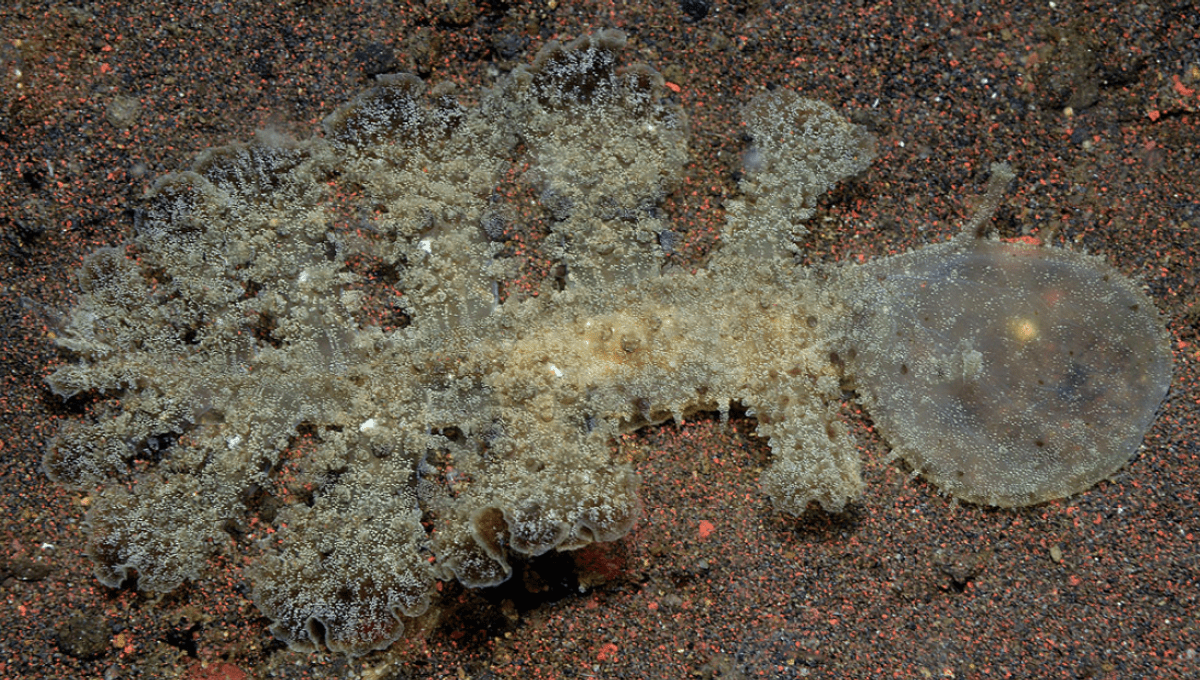
Nudibranchs quite literally come in all shapes, sizes, and colors, but most recently we’ve been losing it over the perplexing body plan of Melibe viridis, also known as the green melibe. Its elongated body is lined with sticky lobes that act a little like legs but also as decoys when under attack, and it’s easy to see how a predator could become confused when grappling with such a bizarre creature.
The leading characteristic of green melibes is their strange approach to feeding. They’ve evolved to lose the radula method of feeding seen in other sea slugs (which also sit within the nudibranchs) and instead possess an oral veil. They cast the veil a bit like a net, and when tiny hairs that line it come across potential prey, the oral veil contracts and traps its victims.
Animals scooped up by the green melibe’s oral veil are then broken down and digested, after which it gets back to feeding. Quite the proficient hunter, then, but as a squishy seabed-dwelling animal it’s also vulnerable to predation itself.
Here, the green melibe has evolved to practice a rather peculiar kind of defense mechanism. The lobes that line its body are very sticky, something which helps them to move through seagrass as they cling onto substrate and shuffle along. Should a predator try to feed on the green melibe, it can stick one of the lobes to its body before detaching the appendage and escaping.
For this reason, it’s advised that if you spot one of these sea slugs while diving you should leave it alone as you don’t want to cause them to drop a lobe unnecessarily. Cooking up another will take the weary sea slug some time, and it’s got scooping to do.
As for where you’re likely to stumble across the ocean’s vacuum cleaners, green melibes are found throughout the tropical Indo-West Pacific, and parts of the Mediterranean. They’re pretty small (13 centimeters/5 inches) so you don’t need to worry about getting scooped up in their bag heads, you can simply look on in horrified wonder as they bag up the seafloor like a tiny marine takeaway.
Source Link: This Sea Slug Weirdo Uses Its Bag For A Head To Vacuum The Seabed